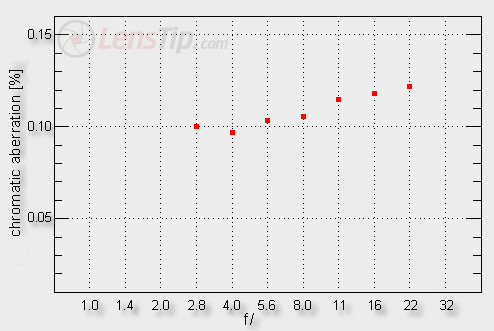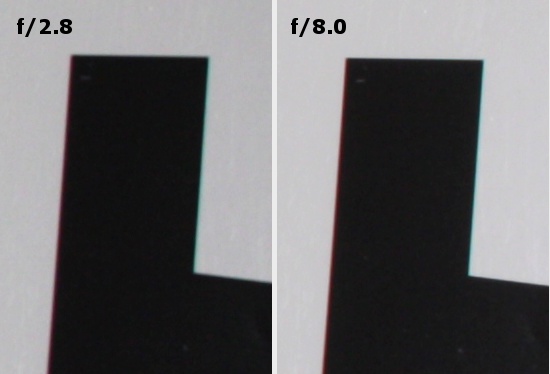Samyang 10 mm f/2.8 ED AS NCS CS
5. Chromatic and spherical aberration
The longitudinal chromatic aberration in ultra wide-angle lenses is never a big problem and the Samyang 2.8/10 is not an exception to that rule. The photo, shown below, mate by f/2.8 aperture shows clearly that aberration is controlled very well.
 |
Please Support UsIf you enjoy our reviews and articles, and you want us to continue our work please, support our website by donating through PayPal. The funds are going to be used for paying our editorial team, renting servers, and equipping our testing studio; only that way we will be able to continue providing you interesting content for free. |
- - - - - - - - - - - - - - - - - - - - - - - - - - - - - - - - - - - - - - - - - - - - - - - -
It would be also difficult to have any major reservations concerning the lateral chromatic aberration. Its level is weakly correlated with the aperture value, staying in a range from 0.10% to 0.12% considered as average.

Here the Samyang sticks out in a positive way when compared to the Tokina which, at 11 mm, could show the aberration level reaching 0.27%. The Samyang is also better than the Sigma but this time only slightly so because the Sigma at 10 mm had the chromatic aberration on a level of 0.13%.
 |
In this category the tested lens can only be praised. Keeping the lateral chromatic aberration in check in an ultra wide-angle lens is very difficult and many producers have found out that much in a painful way. The Samyang managed to keep it in check so it never became distinct.
Spherical aberration
In the case of such a huge depth of field as the one provided by the tested lens it is not possible to get circles of light in front of and behind the focus of a sensible size. Still the spherical aberration didn’t present any symptoms such as a ‘focus shift’ effect so we think it is corrected in a good way.






